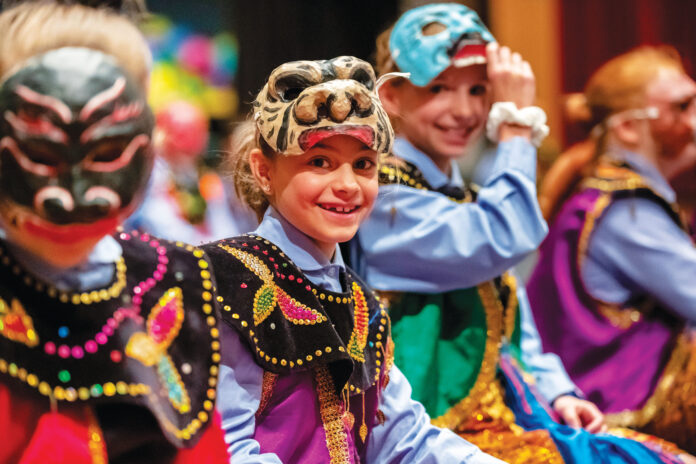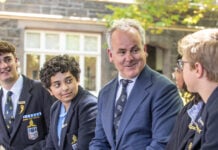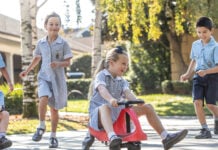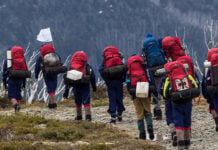A unique incursion supported Year 3 student investigations into the geography, climate, customs and traditional stories of four neighbouring countries – New Zealand, Papua New Guinea, Indonesia and Japan – during their Term III Inquiry.
Operating in House groups, students moved through a variety of activities throughout the day. It culminated in a mini- showcase in which students outlined their learnings through presentation and discussion. Activities included learning a Haka and a traditional Indonesian dance, and creating Japanese head dresses and other artefacts.
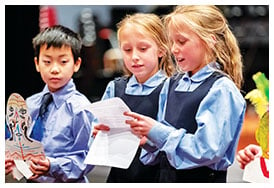
“We want our students to be global citizens,” explains Year 3 coordinator, Ms Emma Morrison. “We want them to understand the importance and customs of communities and countries. The learning commenced at the start of the year by looking ‘local’; that is, investigating our own community at Grimwade House. From there we explored St Kilda including how world events have impacted on that community and its environment over time.”
“We then delved deeply into Australia, considering our First Nation culture, flora and fauna and their adaptations, as well as our emblems, symbols and customs,” adds Ms Morrison. “Now we are now looking at our geographical neighbours so we can begin comparing and contrasting countries and making connections between them.”
For Year 3 student, Isla, the day contributed to her understanding of inter-cultural respect. “Knowing more about a country helps you because you then know what their traditions are,” she says. “If you didn’t understand others’ customs, you could be rude and not realise it.”
Year 3 student, Kieran says: “You should always treat people the way you want to be treated because the way you treat them is probably the way they’ll treat you back. It’s no different whether people actually live next door or down the street, or visiting our country or we are visiting theirs.”
The ‘play based’ approach to the day was intentional. The more senses you involve in a learning process, typically, the more you learn according to Mr Andrew Baylis, Director of Learning and Research. “For example, the students were given cognitive explanations behind the symbolism of traditional dances on the day, then performed the dances themselves. It means they developed physical, aural, and cognitive links in their brain which gives a much richer learning experience and one which is more likely to stay with them,” he says.
